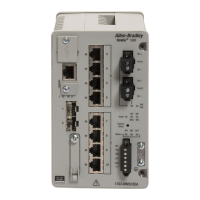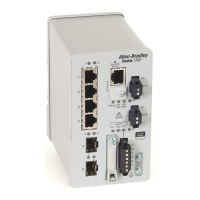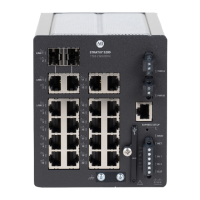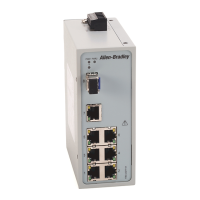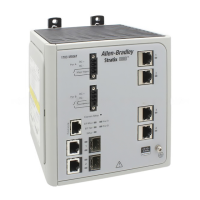Rockwell Automation Publication 1783-UM007G-EN-P - February 2017 195
Configure Switch Features Chapter 7
End to End Transparent Mode
In End to End Transparent mode, the switch transparently synchronizes all
clocks with the master clock connected to it. All ports are enabled by default.
This device corrects the delay incurred by every packet passing through it
(referred to as residence time). This mode causes less jitter and error
accumulation than Boundary mode.
In End to End Transparent mode, all switch ports are PTP-enabled by default.
Forward Mode
In Forward mode, the switch passes PTP packets as normal multicast traffic.
All switch ports are PTP-enabled by default. Forward mode is the default
mode.
NTP-PTP Clock Mode (Stratix 5400 and 5410 Switches)
In NTP-PTP Clock mode, the switch functions as the grandmaster clock and
boundary clock:
• As grandmaster, it uses PTP while deriving the time source from
Network Time Protocol (NTP).
• If configured as a secondary grandmaster, the switch functions as a
boundary clock to forward time, making sure that all devices on the PTP
network remain synchronized in a failover scenario.
NTP-PTP Clock mode enables tightly-controlled PTP zones, such as motion
applications, to maintain time relative to other devices outside the PTP zone
that use NTP. In this scenario, NTP-PTP clock time is beneficial for logging
and event tracking.
IMPORTANT End to End Transparent mode does not work with redundant gateways in a
device-level ring (DLR). For more information about redundant gateways,
see
page 217.
IMPORTANT When changing PTP timing message settings, remember that the system
does not operate properly unless all devices in the system have the same
values.
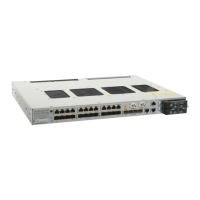
